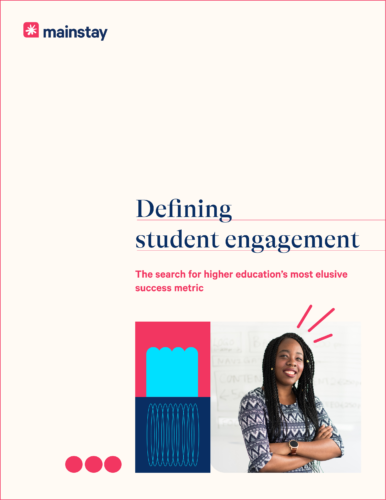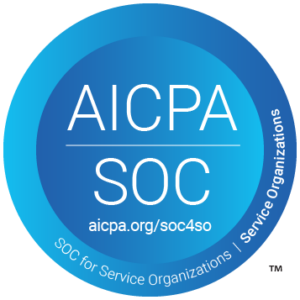Student engagement experts broadly agree that engagement activities are only as useful as the outcomes they help students achieve. These outcomes can include things like access to education, college enrollment, persistence, degree completion, employment, or another tangible result. If these align with your institution’s goals, it’s important for you to use student engagement techniques that will empower you to achieve them.
The importance of effective student engagement can’t be overstated. When institutions are unable to do it well, students are much more likely to have their education journey disrupted, or ended, by obstacles that they could have otherwise overcome with the appropriate support. That’s why the approach your institution takes needs to be thoughtful and relevant to your students.
“We can design all kinds of wonderful things,” says Allison Calhoun-Brown of Georgia State University, “but unless a student actually utilizes those things, we’re not generating the kinds of results… that we need.”
Let’s examine three approaches that you can implement to redefine what student engagement means for your institution and drive positive outcomes:
Student engagement techniques to connect beyond the classroom
The sudden shift to remote learning last year forced many colleges and universities to reconsider what it means to engage students. That conversation has taken on even greater importance in the months since the COVID-19 pandemic began.
Ulisa Bowles, Executive Director of Admissions at Fayetteville State University states it best, “The pandemic has redefined student engagement. There’s a clear line of demarcation between what it was and what it is — and institutions have needed to expand and be creative.”
When students had to leave campus in March of 2020, institutions recognized that their students’ need for support wasn’t going anywhere. If anything, those needs grew exponentially with the shift to a remote environment. Many institutions stepped up to this new challenge, investing in the sort of engagement tools that enabled them to address students’ concerns from anywhere. One example is Dallas College, which quickly launched a personalized web chatbot to provide enhanced guidance and communication for their community throughout the pandemic — paving the way for long-term student engagement.
Communicate on the channels students want to use
Today, a number of undergrads are older than the 18-22 age group traditionally associated with college students. More and more of them are balancing work and family commitments along with their studies. Juggling so many commitments at once means they need to get the right message at the right time — and they need to receive those messages through communication channels that they actually use.
When students don’t read their email, important tasks — like filling out the FAFSA, meeting with an advisor, or resolving a late payment — can easily fall through the cracks. Emails go unread more than you may think. In fact, less than 25% of emails related to education are ever opened. When students miss these critical communications, it can put their education journey at risk.
Meanwhile, students who attend college immediately after high school spend between five to six hours on their mobile devices a day. These students have grown up in an environment where they can easily and instantaneously access information at their fingertips. But many institutions are still adapting to the deeper level of digital engagement these students expect.
As Carol Rava, Deputy Director of the college access nonprofit GetSchooled, noted, “We switched our view of engagement in part because we saw what young people were doing. What equals engagement with information has changed over the past 10 years. Is a student watching TikTok videos about FAFSA or tips to find a summer job? In many cases, that’s a win.”
Georgia State University was one of the first institutions in the country to embrace the ways their students want to engage with them. The university connects with their students via a behaviorally intelligent SMS text messaging chatbot named Pounce.
GSU uses Pounce to proactively text students with reminders, surveys, and fun check-ins using a friendly, personalized approach. Pounce also answers questions instantly and automatically around the clock — ensuring that students always have the information they need when they need it. As far back as 2015, 90% of GSU students opted in to use Pounce. The school has successfully driven positive outcomes for students throughout the entire higher education journey, ever since.
Listen to students at scale
We’re living in a time of great change — from a renewed reckoning on systemic racism, to the ramifications of a global pandemic. Empathetic, timely, and meaningful communication with students has never been more critical.
A growing body of research is helping college and university leaders better understand how students’ sense of belonging on campus impacts their overall success. Belonging is the degree to which students feel “accepted, respected, included, valued, and happy at school.” According to a recent study, having a sense of belonging is a predictor of “better persistence, engagement, and mental health.” So, it stands to reason that examining whether students feel like they belong at their institution is paramount to improving engagement.
Historically, colleges and universities have had a limited-at-best view into students’ mental health, their day-to-day challenges, and their successes. Advancements in Behavioral Intelligence are changing the game, though. Today, technologies like Mainstay’s Student Engagement Platform enable you to empathetically communicate with students, build trusting relationships with them, and actively listen at scale to their needs, expectations, or concerns.
How to define and measure student engagement at your institution
Download Mainstay’s free white paper, “Defining student engagement” to explore how you can shape the conversation about student engagement at your institution. You’ll discover some of the other higher education leaders are thinking about their student engagement techniques today, the critical engagement factors that lead to student success, and the key questions to ask yourself when defining what student engagement means at your school.



